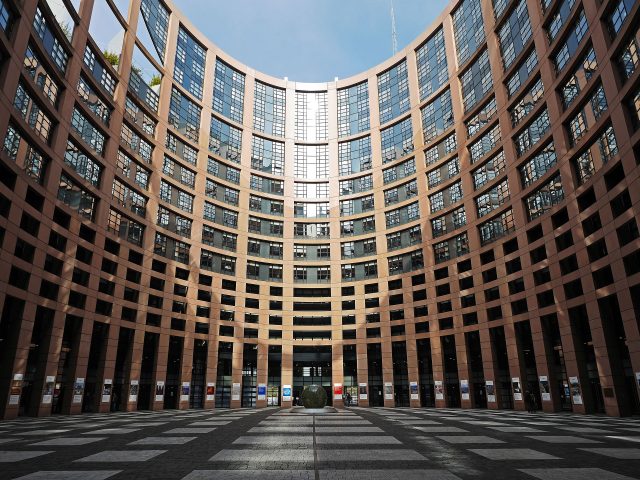
The European Union (EU) is at a crucial stage in its fight against climate change.
With the adoption of the European Climate Law, the target of reducing greenhouse gas (GHG) emissions by 55% by 2030 has become a binding legal obligation. To achieve this goal and ensure climate neutrality by 2050, the EU has launched a set of legislative proposals gathered in the Ready for 55% package. This package aims to significantly reduce emissions in several economic sectors, ensuring a fair and sustainable transition, maintaining the competitiveness of European industry and reaffirming the EU’s global leadership in the fight against climate change.
The EU Emissions Trading System (EU ETS) and its Reforms
One of the key instruments for reducing emissions in the EU is the Emissions Trading System (EU ETS), introduced in 2005. This carbon market is based on a cap-and-trade mechanism, involving energy-intensive sectors such as heavy industry and power generation. Since 2005, emissions in sectors covered by the EU ETS have decreased by 41%. The “Ready for 55%” package proposes significant reforms to make the system more ambitious. These include the extension of the rules to the maritime transport sector, the accelerated reduction of emission allowances and the phasing out of free allowances for some sectors. In addition, new provisions are introduced for international air transport through the implementation of the Carbon Offsetting and Reduction Scheme for International Aviation (CORSIA). These reforms are crucial for taking stronger climate action, strengthening the role of the EU ETS as a central tool for reducing emissions and achieving the EU’s 2030 and 2050 targets.
The transition to a low-carbon economy presents not only technical but also social challenges. To address the socio-economic impact that could affect the most vulnerable sections of the population, the “Fit for 55%” package includes the creation of the Social Climate Fund. This fund is designed to mitigate the effects of new regulations on the emissions trading system applied to the buildings and road transport sectors, sectors that could entail additional costs for citizens. The Fund will provide direct support to low-income households and promote investments in sustainable infrastructure, while reducing dependence on fossil fuels. In this way, the Fund aims to ensure that no one is left behind in the transition to a greener and more sustainable society.
The Carbon Border Adjustment Mechanism (CBAM) is another key initiative of the ‘Fit for 55%’ package. This mechanism aims to prevent CO2 emissions leakage, which occurs when companies move production to countries with less stringent environmental regulations. The CBAM will apply to imports of carbon-intensive products, such as steel and cement, and will operate in parallel with the EU ETS, imposing costs on imports equivalent to those borne by European companies for their emissions. This mechanism is essential to maintain fair competition and prevent the EU’s efforts to reduce emissions from being undermined by higher emissions elsewhere. Furthermore, the CBAM will also stimulate more ambitious climate policies in other regions of the world.
New Rules for the Transport Sector
The transport sector is one of the main sources of greenhouse gas emissions in the EU. To address this, the ‘Fit for 55%’ package introduces new CO2 emissions rules for cars and vans, with the aim of reducing emissions from these vehicles by 100% by 2035. This measure is part of a broader strategy to promote the uptake of electric vehicles and other low-emission technologies, thus helping to reduce air pollution and improve the quality of life in European cities. Another key aspect concerns sustainable fuels for aviation and maritime transport. The new rules incentivise the use of advanced biofuels and electrofuels, in order to significantly reduce emissions from these sectors, which have so far made limited progress in reducing their environmental impact.
Promoting Renewable Energy and Improving Energy Efficiency
The revision of the Renewable Energy Directive is another pillar of the ‘Fit for 55%’ package. The aim is to increase the share of renewables in the EU’s energy mix to at least 40% by 2030. This measure, accompanied by efforts to improve the energy efficiency of buildings and industrial processes, is key to reducing the EU’s dependence on fossil fuels and promoting a sustainable energy transition.
The “Fit for 55%” package represents a decisive step in the European Union’s commitment to tackling climate change. Through a set of ambitious and integrated legislative measures, the EU aims to drastically reduce its greenhouse gas emissions by 2030 and achieve climate neutrality by 2050. However, this transition will require a collective commitment and coordinated effort from all actors involved, including governments, businesses and citizens. The success of the package will depend on the ability to balance environmental objectives with economic and social needs, ensuring a just and sustainable transition for all.



 Subscribe
Subscribe